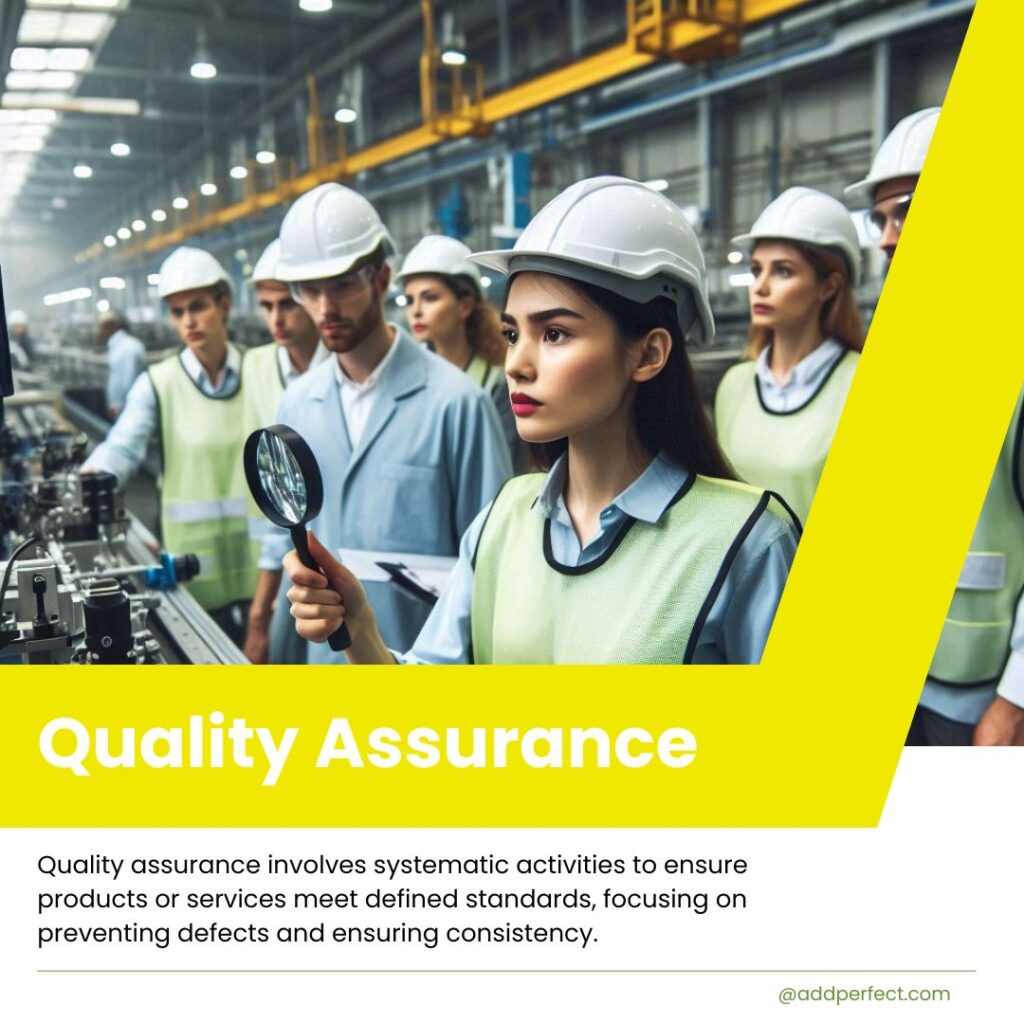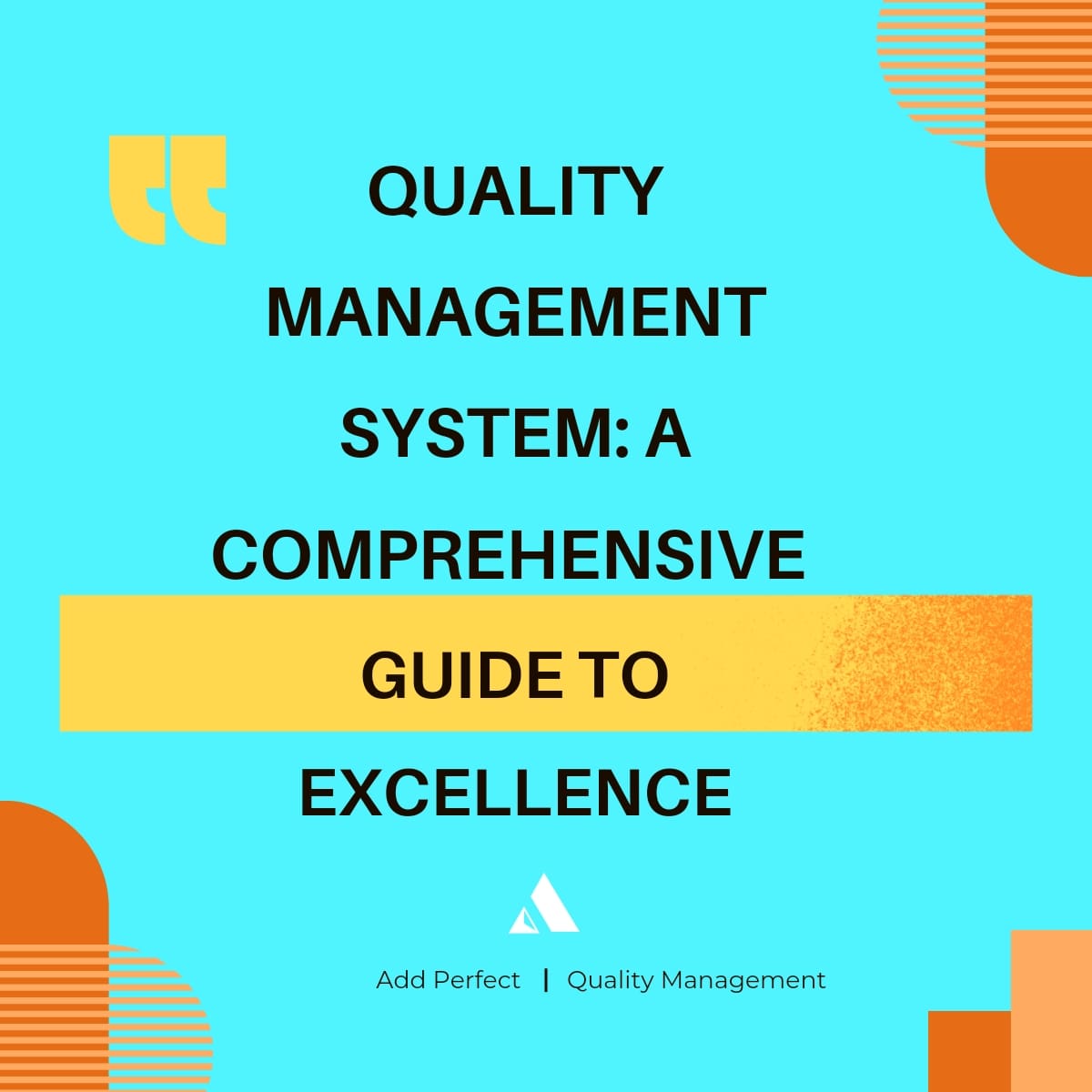Discover the comprehensive Quality Assurance Process, its importance, steps involved, and how it ensures high-quality products and services.
Introduction
In today’s competitive market, maintaining high-quality standards is crucial for business success. The Quality Assurance Process is a structured approach to ensuring products and services meet defined quality criteria consistently. This article explores the Quality Assurance Process, its components, and how it benefits various industries.

Understanding the Quality Assurance Process
The Quality Assurance Process is a systematic approach to preventing defects and ensuring quality in the production lifecycle. It focuses on processes rather than the final product, aiming to enhance the processes to produce quality outputs.

Key Components of the Quality Assurance Process
The Quality Assurance Process includes several key components:
- Planning: Establishing quality goals and determining the processes required to achieve them.
- Design: Developing efficient processes that align with quality objectives.
- Monitoring: Continuously observing processes to ensure they adhere to quality standards.
- Improvement: Making necessary adjustments to processes to enhance their effectiveness.
Steps in the Quality Assurance Process
The Quality Assurance Process can be broken down into several critical steps:
- Define Quality Objectives: Clearly outline what quality means for your organization.
- Develop Quality Plans: Create detailed plans that specify quality standards, processes, and procedures.
- Implement Quality Plans: Put the quality plans into action, ensuring all team members are aware and trained.
- Monitor Performance: Continuously monitor processes to ensure compliance with quality standards.
- Conduct Audits: Regularly audit processes to identify areas for improvement.
- Implement Improvements: Make changes to processes based on audit findings and performance data.
Differences Between Quality Assurance and Quality Control
To understand the Quality Assurance Process, it’s essential to differentiate it from Quality Control. Here’s a comparative table:
| Aspect | Quality Assurance Process | Quality Control |
|---|---|---|
| Focus | Processes | Products |
| Nature | Preventive | Corrective |
| Objective | Improve and ensure quality processes | Detect and correct product defects |
| Approach | Proactive | Reactive |
| Responsibility | Entire team | Dedicated personnel |
| Tools and Techniques | Process audits, training, documentation | Inspections, testing, validation methods |
| Timing | Throughout the production cycle | After production completion |
Implementing the Quality Assurance Process in Different Industries
The Quality Assurance Process is vital across various industries. Here’s how it applies to a few key sectors:
Manufacturing
In manufacturing, the Quality Assurance Process ensures that products are made correctly the first time, reducing waste and rework.
- Quality Planning: Establishing manufacturing standards and procedures.
- Process Design: Creating workflows that ensure product quality.
- Monitoring and Auditing: Regular inspections of manufacturing processes.
- Continuous Improvement: Implementing feedback from audits and performance data.
Software Development
In software development, the Quality Assurance Process ensures that software is developed to meet user needs and is free from defects.
- Requirement Analysis: Defining quality standards based on user requirements.
- Design and Development: Ensuring coding practices align with quality standards.
- Testing: Conducting various tests to ensure the software meets quality criteria.
- Release and Maintenance: Continuously monitoring and updating the software to maintain quality.
Healthcare
In healthcare, the Quality Assurance Process ensures that patient care services meet regulatory standards and provide safe, effective treatment.
- Policy Development: Establishing protocols and standards for patient care.
- Staff Training: Ensuring healthcare providers are trained in quality procedures.
- Process Monitoring: Regularly reviewing patient care processes.
- Audit and Feedback: Conducting audits and implementing improvements based on feedback.
Benefits of the Quality Assurance Process
Implementing the Quality Assurance Process offers numerous benefits:
- Enhanced Product Quality: Ensures products consistently meet quality standards.
- Improved Efficiency: Streamlines processes, reducing waste and rework.
- Customer Satisfaction: High-quality products lead to increased customer trust and loyalty.
- Regulatory Compliance: Ensures adherence to industry standards and regulations.
- Reduced Costs: Prevents defects, reducing the costs associated with rework and returns.
Challenges in Implementing the Quality Assurance Process
While the Quality Assurance Process offers many benefits, it also presents challenges:
- Resource Intensive: Requires significant time and resources to implement effectively.
- Cultural Resistance: Employees may resist changes to established processes.
- Complexity: Involves managing and coordinating multiple processes and teams.
- Continuous Monitoring: Requires ongoing monitoring and adjustments to maintain quality.
Overcoming Challenges in the Quality Assurance Process
To successfully implement the Quality Assurance Process, organizations can adopt several strategies:
- Top-Down Commitment: Ensure leadership supports and prioritizes quality initiatives.
- Employee Involvement: Engage employees in the quality process through training and involvement.
- Clear Communication: Communicate the importance of quality and the benefits of the QA process.
- Continuous Training: Provide ongoing training to keep employees updated on quality standards and procedures.
- Use of Technology: Leverage technology to streamline quality monitoring and reporting.
Case Study: Successful Implementation of the Quality Assurance Process
Company A: Manufacturing Industry
Company A, a leading manufacturer of automotive parts, implemented the Quality Assurance Process to address recurring quality issues. By establishing clear quality objectives, redesigning their production processes, and implementing continuous monitoring and improvement practices, they were able to reduce defects by 30% and increase customer satisfaction significantly.
Company B: Software Development
Company B, a software development firm, faced challenges with software bugs and customer complaints. Implementing the Quality Assurance Process involved redefining their development practices, incorporating regular code reviews, and conducting comprehensive testing before releases. This led to a 40% reduction in post-release bugs and improved customer feedback.
Frequently Asked Questions about the Quality Assurance Process
1. What is the main goal of the Quality Assurance Process?
- The main goal is to prevent defects by focusing on process improvement and ensuring that all production stages meet quality standards.
2. How does the Quality Assurance Process differ from Quality Control?
- The Quality Assurance Process is proactive and focuses on improving processes, while Quality Control is reactive and focuses on identifying and correcting defects in products.
3. Can the Quality Assurance Process be applied to small businesses?
- Yes, the Quality Assurance Process can be scaled to fit the needs and resources of small businesses, helping them ensure product quality and customer satisfaction.
4. What tools are commonly used in the Quality Assurance Process?
- Common tools include process audits, statistical process control (SPC), quality management software, and continuous improvement methodologies like Six Sigma.
5. How often should the Quality Assurance Process be reviewed?
- The Quality Assurance Process should be reviewed regularly, at least annually, or whenever significant changes occur in production processes or quality standards.
Conclusion
The Quality Assurance Process is a vital component of effective quality management. By focusing on process improvement, it ensures that products and services consistently meet high-quality standards. Implementing the Quality Assurance Process can lead to enhanced product quality, increased efficiency, and greater customer satisfaction. Understanding and overcoming the challenges associated with the QA process is crucial for achieving these benefits. By incorporating this comprehensive approach, businesses can establish a strong foundation for quality excellence.




I was recommended this website by my cousin I am not sure whether this post is written by him as nobody else know such detailed about my trouble You are amazing Thanks
Usually I do not read article on blogs however I would like to say that this writeup very compelled me to take a look at and do so Your writing taste has been amazed me Thanks quite nice post